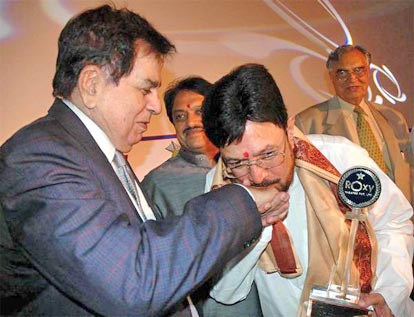
F1 Facts...
, Interesting and Amazing...
| vivekpm |
 Jun 10 2005, 07:56 PM Jun 10 2005, 07:56 PM
Post
#1
|
|
Dedicated Member  Group: Members Posts: 1404 Joined: 22-November 03 Member No.: 120 |
01. An F1 car is made up of 80,000 components, if it
were assembled 99.9% correctly, it would still start the race with 80 things wrong! 02. Formula 1 cars have over a kilometre of cable, linked to about 100 sensors and actuators which monitor and control many parts of the car. 03. An F1 car can go from 0 to 160 kph AND back to 0 in FOUR seconds!!!!!!! 04. F1 car engines last only for about 2 hours of racing mostly before blowing up on the other hand we expect our engines to last us for a decent 20yrs on an average and they quite faithfully DO....thats the extent to which the engines r pushed to perform... 05. When an F1 driver hits the brakes on his car he experiences retardation or deceleration comparable to a regular car driving through a BRICK wall at 300kmph! 06. An average F1 driver looses about 4kgs of weight after just one race due to the prolonged exposure to high G forces and temperatures for little over an hour (Yeah thats right!!!) 07. At 600 kg a F1 car is less than half the weight of a Mini. 08. In an F1 car the engine typically revs upto 18000 rpm,(the piston travelling up and down 300 times a second!!) wheres cars like the palio, maruti800, indica rev only upto 6000 rpm at max. Thats 3 times slower. 09. The brake discs in an F1 car have an operating temperature of approx 1000 degees Centigrade and they attain that temp while braking before almost every turn...that is why they r not made of steel but of carbon fibre which is much more harder and resistant to wear and tear and most of all has a higher melting point. 10. If a water hose were to blow off, the complete cooling system would empty in just over a second. 11. Gear cogs or ratios are used only for one race, and are replaced regularly to prevent failure, as they are subjected to very high degrees of stress. 12. The fit in the cockpit is so tight that the steering wheel must be removed for the driver to get in or out of the car. A small latch behind the wheel releases it from the column. Levers or paddles for changing gear are located on the back of the wheel. So no gearstick! The clutch levers are also on the steering wheel, located below the gear paddles. 13. To give you an idea of just how important aerodynamic design and added downforce can be, small planes can take off at slower speeds than F1 cars travel on the track. 14. Without aerodynamic downforce, high-performance racing cars have sufficient power to produce wheel spin and loss of control at 160 kph. They usually race at over 300 kph. 15. The amount of aerodynamic downforce produced by the front and rear wings and the car underbody is amazing. Once the car is travelling over 160 kph, an F1 car can generate enough downforce to equal it's own weight. That means it could actually hold itself to the CEILING of a tunnel and drive UPSIDE down! 16. In a street course race like the monaco grand prix, the downforce provides enough suction to lift manhole covers. Before the race all of the manhole covers on the streets have to be welded down to prevent this from happening! 17. The refuelers used in F1 can supply 12 litres of fuel per second. This means it would take just 4 seconds to fill the tank of an average 50 litre family car.They use the same refueling rigs used on US military helicopters today. 18. TOP F1 pit crews can refuel and change tyres in around 3 seconds. 19. Race car tyres don't have air in them like normal car tyres. Most racing tyres have nitrogen in the tyres because nitrogen has a more consistent pressure compared to normal air. Air typically contains varying amounts of water vapour in it, which affects its expansion and contraction as a function of temperature, making the tyre pressure unpredictable. 20. During the race the tyres lose weight! Each tyre loses about 0.5 kg in weight due to wear. 21. Normal tyres last 60 000 - 100 000 km. Racing tyres are designed to last 90 - 120 km (That's Khandala and back). 22. A dry-weather F1 tyre reaches peak operating performance (best grip) when tread temperature is between 900C and 1200C.(Water boils at 100 C remember) At top speed, F1 tyres rotate 50 times a second. V i V e K ...
-------------------------------------------- Education is a progressive discovery of our own ignorance. -- Will Durant |
  |
Replies
| YaarMere |
 Jun 12 2005, 12:00 AM Jun 12 2005, 12:00 AM
Post
#2
|
 Dedicated Member  Group: Members Posts: 2897 Joined: 24-December 03 Member No.: 5 |
I love F1!! We sud talk more on this sport. Football also.
 |
| vivekpm |
 Jun 17 2005, 11:14 PM Jun 17 2005, 11:14 PM
Post
#3
|
|
Dedicated Member  Group: Members Posts: 1404 Joined: 22-November 03 Member No.: 120 |
QUOTE(YaarMere @ Jun 12 2005, 12:00 AM) Me too... Although this season I have not seen a single race Has anyone here seen F1 live, anywhere? Cheers, V i V e K ...
-------------------------------------------- Education is a progressive discovery of our own ignorance. -- Will Durant |
Posts in this topic
 vivekpm F1 Facts... Jun 10 2005, 07:56 PM
vivekpm F1 Facts... Jun 10 2005, 07:56 PM

 deghosh Just chanced upon this thread. Awesome information... Jul 22 2005, 09:07 PM
deghosh Just chanced upon this thread. Awesome information... Jul 22 2005, 09:07 PM

 vivekpm
Me too... Although this season I have not seen a... Jul 23 2005, 12:04 AM
vivekpm
Me too... Although this season I have not seen a... Jul 23 2005, 12:04 AM

 deghosh It was a mindblowing experience last year. Ralf ha... Jul 23 2005, 12:25 AM
deghosh It was a mindblowing experience last year. Ralf ha... Jul 23 2005, 12:25 AM

 vivekpm
Now you are forcing me to envy you... In a way I... Jul 23 2005, 12:34 AM
vivekpm
Now you are forcing me to envy you... In a way I... Jul 23 2005, 12:34 AM

 deghosh Jordan sucks. Its to Narain's credit that he h... Jul 23 2005, 12:47 AM
deghosh Jordan sucks. Its to Narain's credit that he h... Jul 23 2005, 12:47 AM
 vivekpm Yes Narain will have tough time next season unless... Jul 23 2005, 12:54 AM
vivekpm Yes Narain will have tough time next season unless... Jul 23 2005, 12:54 AM
 deghosh Vivek,
I am in this boards long enuf to let these ... Jul 23 2005, 01:06 AM
deghosh Vivek,
I am in this boards long enuf to let these ... Jul 23 2005, 01:06 AM  |
1 User(s) are reading this topic (1 Guests and 0 Anonymous Users)
0 Members:

|
Lo-Fi Version | Disclaimer | HF Guidelines |  |
Time is now: 18th July 2025 - 04:24 PM |
Invision Power Board
v2.1.7 © 2025 IPS, Inc.
Licensed to: Hamaraforums.com










